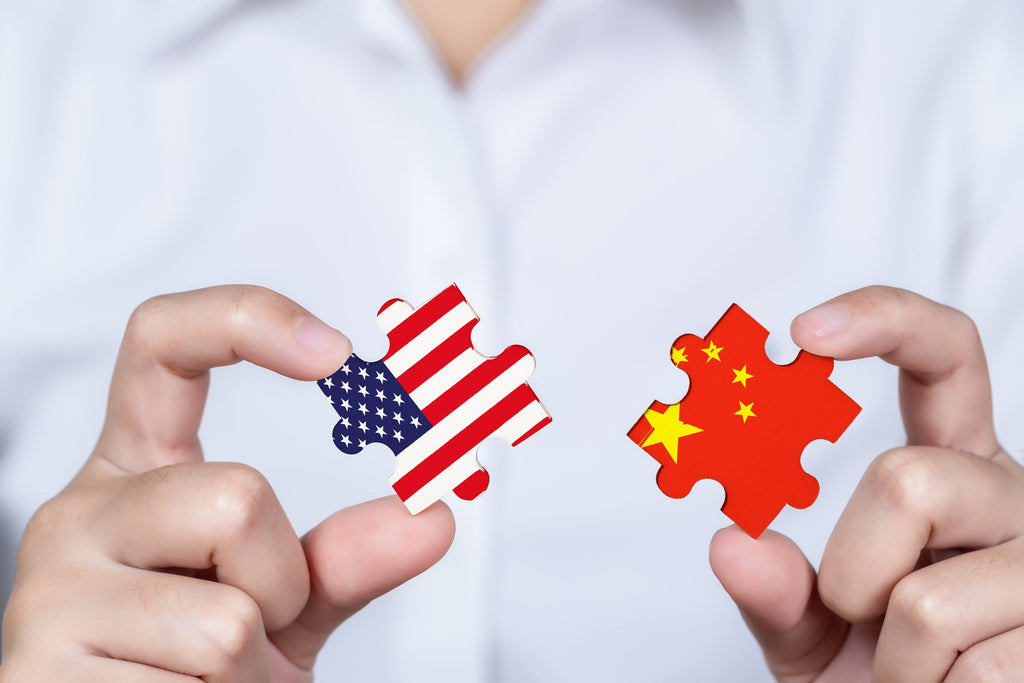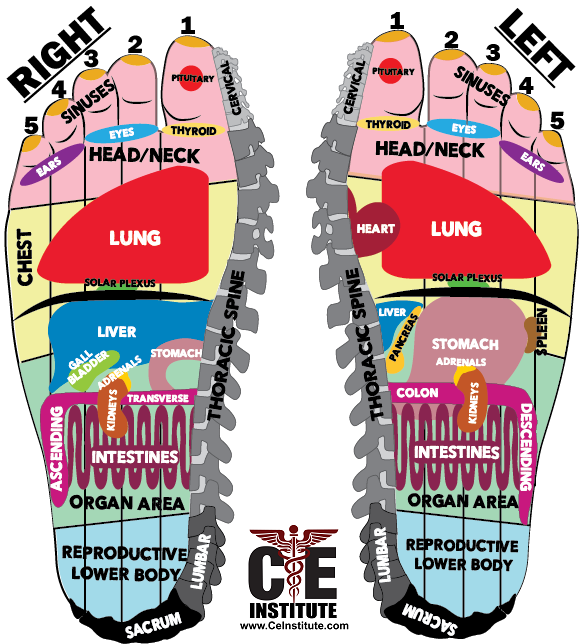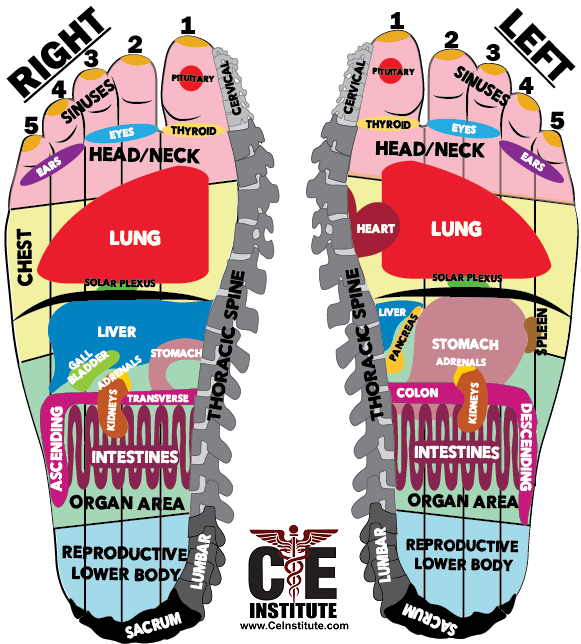I sought a walk-in foot reflexology appointment at an eastern influenced Reflexology establishment in Paris. Upon entering, one of the first things I saw or realized was that it was the cleanest, most sleek or professional in appearance when compared to our similar establishments in ANY country. They provided open services which allowed a greater amount of clients to be served than an establishment that has set up private treatment rooms instead.

I was seeking to analyze various eastern modalities practiced in European cities and this experience did not disappoint. By its own standard of eastern Tuina practice, it was likely the best reflexology asian fusion appointment I have ever experienced which I found in a small establishment in the southside of Paris.

They had a variety of appointments available which included both Reflexology and Tuina, with a small retail area on shelves. The different appointments, time-lengths and combinations provided busy tourists and walk-ins appropriate options to select or more importantly upgrade into longer services. So they have maximized their business opportunities with the available space, which was good to see the excellent forethought in this establishment. I speak a little bit of Chinese from my time studying at the Beijing Massage Hospital in China, so I engaged the women in Chinese and they were pleasantly surprised to hear my attempt at their language as an American tourist in Paris. All of the women appeared to be extremely well trained Tuina practitioners of Chinese descent. This was my opinion from viewing their methodical hands-on application which was continued effortlessly and without missing a beat regardless if they were directly looking at their work, or the walk-in patrons. Their speed, thoroughness, anatomical foot movement with joint mobilization and other professional anomalies exposed their expertise.
The practitioners gaze up from their work as new potential patrons walk-in on the busy streets of Paris, to welcome them and encourage them to enter for service. In most Tuina establishments, client privacy or speaking to others while providing open services is normal, despite it not being or feeling the most professional when providing a one-on-one medical or massage service, especially to a client who is used to more discreet western practices.
At first, I attempted to book a 60 minute service which would include 30 minutes foot reflexology and 30 minutes tuina. The Tuina was defined or explained as body massage on their service menu with pricing. I was told they had availability for my appointment and they asked me to sit in one of the relaxing chairs next to other customers, and then I waited for a period of time while the providers continued to work on other clients who had arrived and started service before me. Pictured below is what I would consider a relaxing chair or lounge chair which further reclines for client comfort. Relaxing chairs allows access points to a client from three different positions for massage therapists, reflexologists and other service providers:
- Providers can sit in front of the client to work the feet and lower extremities.
- Providers can sit to the sides of the client to work their hands and upper extremities.
- Providers can sit or stand in back of the client to work the head, neck and upper torso.

After sitting for a considerable period of time waiting, I told them I had another appointment and would only be able to do the 30-minute reflexology due to time constraints, and the woman who appeared to be running the front desk then went and got a bucket of tepid water lined with clear plastic for a foot soak and placed my feet in it. This plastic should be replaced between clients for sanitation reasons.
When I put my feet in the soak for my 30-minute appointment, I wondered how much of my 30-minute appointment was going to be spent in the soak after already sitting there for so long. However, the manager immediately proceeded to the back of my chair and started a dry facial tuina application. After putting my feet in the soak she had then left to go wash her hands, so I thought I was going to be left there sitting again as I had watched some of my staff treat clients. Instead, I was very happy to see that my time in the soak would be spent with an upper body massage. The manager started with facial massage in clearing my 3rd eye and worked her way superiorly to apply quick pressure and stimulation on various meridians throughout my scalp, around my ears and continued posteriorly and inferiorly to my cervicals. She used extreme pressure through my masseter and buccinator muscles, all through touch and feel given she was standing behind me and could not see what she was touching from behind the chair. She continued to use the bony landmarks of my face to start and finish different strokes while my feet were in the soak. She then turned my head to one side and then the other, as she applied grasping techniques from my upper to my mid-back, reaching between my soft tissue and the chair as she worked superiorly to inferiorly down my erector spinae muscles. It was all completely wonderful, and a real bonus to a 30-minute reflexology session.
Once she finished with my upper body massage and foot soak, she removed the bucket of water and sat in front of me. She then applied baby oil to one lower extremity and foot. While Tuina or reflexology would usually be applied without a massage medium in China, baby oil is typically used in establishments outside of China for its excellent glide, including on the palms of hands and soles of feet, plus its inexpensiveness. My provider's initial application of her reflexology felt like I was going to receive Tuina on my feet instead of a reflexology application; however, when she started manipulating around my toes with excessive pressure, I asked her to use less pressure and she then said she was working around my ear reflex points, so that helped me realize and differentiate that she was truly practicing reflexology with what felt like some sort of Tuina influence. The following are some notes of this foot reflexology session from an obvious Tuina expert practitioner:
1. There was no care working around broken toe joints. I have several broken toes and some of the joints have started to fuse with the fractures; however, this therapist manipulated those long-time broken joints with force and without hesitation which made me nervous; however, no harm was done, and it does seem like my toes feel and move a little bit better with this manipulation too. In American application, if we manipulated similarly and accidentally damaged or broke a toe joint with such force, we'd likely be sued and find ourselves as a defendant in court.

2. She worked one foot at a time and didn't wrap the second foot while working on the first or vice versa. The other providers in the establishment did, which was good practice and what we teach here at our school. I believe the manager working on me might have been a bit out of practice with client comforts, and performed the appointment herself when all of her other staff were busy, and I had already waited an excessive period of time for my appointment to begin.
3. The practitioner used excessive pressure where it felt like a 10 VAS Score. I repeatedly asked her to use less pressure, which was sometimes followed for about 10-30 seconds before excessive pressures resumed. In America, it is considered unethical to ignore a client's request or direction for legitimate therapeutic service, and could also have greater consequences if a client is injured after not appropriately adjusting to a customer's request.

4. After approximately 10-minutes instead of the foot reflexology session on just one foot, I started feeling euphoric. It felt like channels of energy within my body were awakened with good spirits. It's hard to put it into words beyond simply stating that I overall felt better health, despite the excessive pressure being applied to my feet which was quite painful. It is typical in western or any application to feel better during reflexology, massage or other bodywork during and after service.
5. Approximately 25-minutes into my 30-minute reflexology session I felt an overwhelming feeling of nausea. I have taught and practiced reflexology for decades, and while I had never personally experienced this feeling despite receiving hundreds of reflexology sessions myself, I did have my first experience with it during this appointment and it was overwhelming. It is possible that I could have felt nauseous with or without the reflexology application and we'll never know otherwise. It's so irregular amongst recipients that it's hard to say nausea could be a reflexology side-effect, and while it is rare, it has been repeatedly reported throughout the years. I simply allowed the reflexology to continue and the feeling eventually subsided. In an western reflexology application, I might continue the reflexology for a few minutes similarly. If a client starts to rapidly deteriorate during reflexology, I would immediately stop and seek appropriate medical attention. But in this case here, the nausea became an afterthought that I had forgotten about once I stood up, until I wrote this article. I never mentioned my feelings of nausea to the practitioner due to our language barrier, and I was more focussed on trying to help her understand my need for less pressure, nevermind the new feeling of nausea!
6. During the reflexology application, I couldn't help but notice the poor ergonomics of hand, finger and knuckle use, which includes pressing into soft tissues which puts excessive pressures on a practitioner's joints. Unfortunately this is mostly unavoidable during reflexology practice, unless you use a tool which we also do not feel is appropriate. Foot reflexology application is not appropriate work for any practitioner who is experiencing pain, arthritis or other medical deterioration of joints of the hand, regardless of your training, practice or background.
7. On a more positive note, the practitioner did move my foot around in many to many different angles with her continuous application. I personally usually just leave a foot in its normal anatomical position and work around the foot as it lays. After viewing this methodical alteration of foot positions, I may start new reflexology routines here at the school in which more vigorous repositioning of the foot for different access is applied.
8. In this reflexology application, the practitioner worked the lower extremities in addition to the feet which we feel is acceptable and good practice when the provider has time. The most important focus would be spending the majority of the appointment time stimulating the reflex points though, which this practitioner did.

9. This reflexology application was laser precise, thorough and fast. I thought I worked quickly and recommended students to not exceed the speed of my application; however this practitioner was even faster than I am with her stimulation of points which is surprising. I had doubted true reflexology's effectiveness when points are merely quickly passed over with stimulation versus purposely applied with greater intention and time. This quickness and speed seemed effective by this extremely experienced reflexologist.
10. Her foot reflexology application was similar to what we teach in regards to the different areas and thoroughness of the foot which receives various strokes and stimulation. While the speed remained quite fast throughout, she did use simultaneous and alternating strokes similar to how we apply reflexology with both hands over an individual foot. Even the knuckles are used singularly for stimulation and simultaneously, similarly to how we teach to apply our foot reflexology lung press here at the school.
11. The reflexology application included pinching, pushing, striking, rubbing, pressing and other soft tissue stimulation applications. There was practically no gliding which we teach to help relax a client, with the exception of a very fast application of gliding strokes which almost amounts to friction, when she used the heel of the palm over the lateral dorsum of the foot.
12. Probably because baby oil had been applied, she finished her service on each lower extremity by taking the paper towel from under my foot and using it as a barrier to massage my lower leg and foot with various compressions which felt quite nice. These compressions with the paper towel allowed most of the oily residue to be removed. When she removed the paper towel from underneath my feet which was placed there for likely sanitation reasons, it left my feet directly on a red towel. I am concerned about the reuse of these red hand towels from one client to the next. Linens such as these with direct client contact should be laundered between clients and not reused.

13. While we do love utilizing relaxing chairs and offering open services which maximizes establishment service provider space, in this particular case the setup hyperextends the client’s knees (seen in the picture above) which we do not feel is good practice, and in some cases, could leave a client’s knees feeling worse than when they started. I am only 5’4”, and every client who was taller than me suffered the same joint hyperextension. This can easily be adjusted by properly bolstering the knees with some type of support such as a professional bolster, pillow or rolled towel.
14. The 30-minute reflexology session was completed with very significant and hard striking tapotement, where practitioners raised their hands high in the area and then struck the lower extremities, in addition to using force with their strikes, including pounding the calcaneus of the sole of the foot with their fists.

When I stood, the first thing I noticed was how light I felt. It felt like I had lost 50 pounds! There was a certain lightness in my feet where my legs didn't feel heavy, which was an unusual feeling after spending so much time walking through Paris, seeking places like this one. Any feeling of nausea had dissipated and was forgotten. The next morning, I did have some soft tissue soreness in some areas of the feet, where they had likely been overworked with too much pressure, however I would not call it significant pain. My feet still felt great but the obvious feeling of lightness no longer remained.

What was nice to experience in Paris with this European influence on reflexology service provided with eastern influence was slightly better sanitation and visual esthetics than what is normally found in some of these foot reflexology establishments. I had a tuina massage in London that was so unsanitary and professional that I was not able to write about the experience without being overly critical. For example, one of my legs was bolstered with a roll of toilet paper. In writing professional evaluations and reviews of the massage and bodywork services, we want to review good examples and provide learning experiences to avoid poor examples as well for overall business and career improvement.
In conclusion, there are a lot of similarities and some stark differences with foot reflexology applications between western and eastern practitioners. In the end, both application styles are effective. It is my opinion that western reflexology applications are taught to be more sanitary, professional and discreet while eastern applications may result with more immediate noticeable effectiveness. Now if we could only merge the two together while avoiding legal liabilities, we'd likely have the most effective and therapeutic service of all.
This establishment, the providers and its location are purposely not disclosed to protect their privacy. While we would recommend services there given the quality when compared to the rest of their unique class, the intention of this article is to provide an analysis for learning and improving our own individual practice, with no other ulterior motive or purpose.












